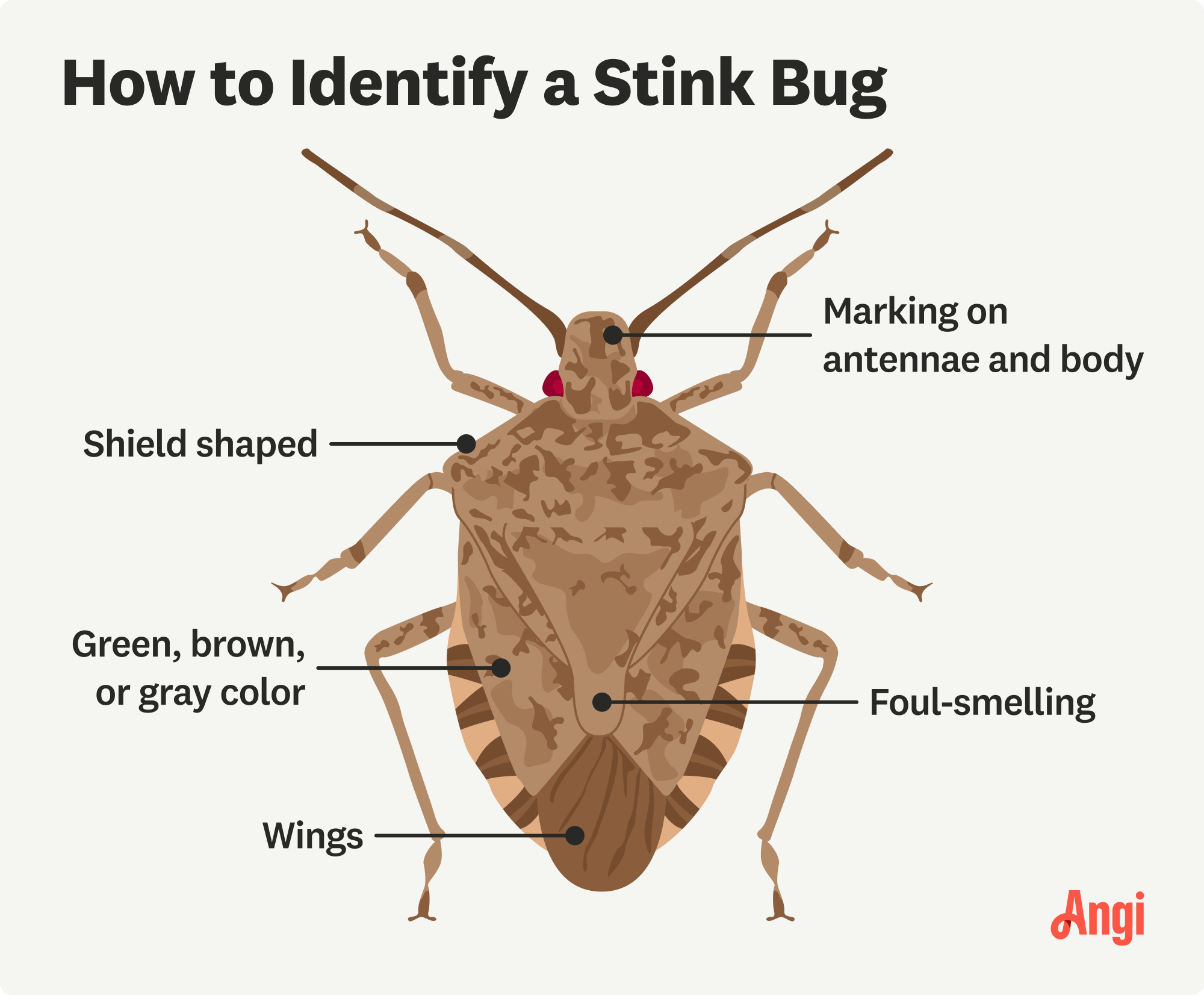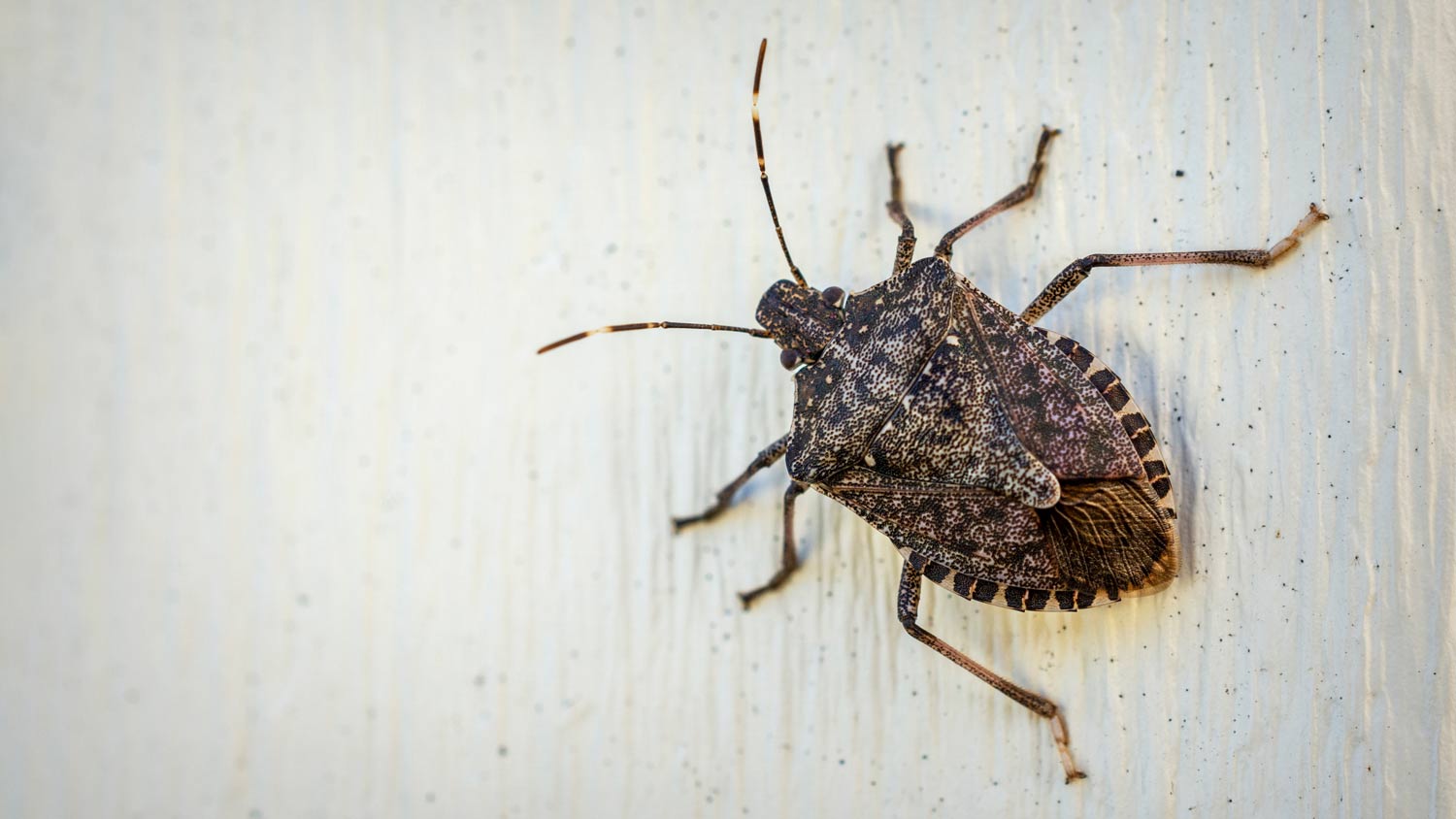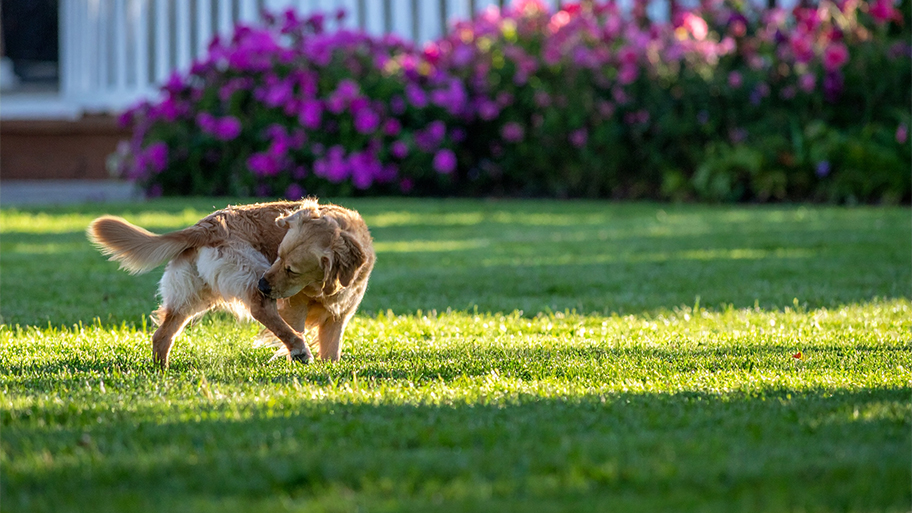
Whether you have bugs, bats, or rodents invading your home, you’ll want to contact an exterminator quickly. Find out how much pest control costs in Columbus, OH.
Stick it to those stink bugs once and for all


Hire a local exterminator for around $100 to $300 if you need kid- or pet-safe solutions that are more effective than DIY treatments like diatomaceous earth.
A pro can help you prevent a stink bug infestation in the future by sealing cracks in your windows and doors and weather-stripping your home.
Many stink bugs have developed a resistance to commercial pesticides, so hire a pest control specialist who can offer effective solutions.
Stink bugs can be a nuisance, punishing those who crush them with their pungent, repulsive scent. What’s worse, where there’s one, there’s almost always more.
Luckily, learning how to exterminate stink bugs from your house is possible, thanks to a few DIY methods. This guide covers how to exterminate stink bugs in the house without the assault on your nostrils, and how to keep them from coming back.

While it can seem like they spawn out of nowhere, the great outdoors is where stink bugs come from—they don’t breed indoors. Stink bugs sneak indoors when they need a warm place to spend the winter. They’re attracted to light and warmth, so you’ll often find them near sunny windows, attics, or light fixtures.
These pests enter through small cracks in windows, doors, siding, and even chimneys. While they don’t bite or spread disease, they release a foul-smelling odor when squished, making them annoying to tackle the old-fashioned way.
The cost of pest control services for a stink bug infestation falls between $100 and $300. However, prices can fluctuate based on the severity of the problem and the type of treatment method. Get in touch with a local exterminator for a custom quote that fits your unique situation.

Sprinkle food-grade diatomaceous earth along door thresholds, window sills, and in crawl spaces. The fine powder damages the stink bug’s outer shell, causing it to dehydrate and die. It's safe for people and pets when used as directed.
Fill a shallow pan or bowl with water and add a few drops of dish soap, then place the bowl in a sunny spot or near a light source where stink bugs gather. The bugs will be attracted to the light, fall into the water, and drown. Dispose of the water and repeat as needed.
Use a vacuum with a bag to suck up stink bugs (avoid bagless vacuums). Immediately dispose of the bag in an outdoor trash bin to ensure the bugs don’t crawl back out into your home. Clean the vacuum canister or hose thoroughly with a vinegar solution afterward.
To nab individual bugs without releasing their awful aroma in your home, try trapping them with something sticky. For example, you can attach a ball of sticky tape to a telescoping duster pole and use it to trap out-of-reach bugs before bringing them outside to meet their end. You can also try hanging fly paper near points of potential entry.
If nothing you’ve tried successfully keeps the stink bugs at bay, then it’s the right time to hire a professional exterminator. If you don’t already have a trusted pro you work with, contact at least three pest control services for quotes to find the best deal and ensure they specialize in stink bug eradication.
Once you’ve finally seen the last of these smelly, annoying insects, consider these tips to keep them from infiltrating your home in the future.
Stink bugs love to hide in quiet, cluttered areas like attics, basements, and garages. Declutter regularly and keep your home clean to avoid creating their favorite type of hideout. If you find infested items, the simplest fix is to throw them out and take the bugs with them.
Stink bugs sneak in through the smallest openings, especially around windows and doors. Inspect these areas and reseal them with caulk or fresh weather stripping as needed. Since these bugs are drawn to light, try minimizing exterior lighting at night and use curtains or blinds to keep interior lights from shining during the night.
Unkempt yards can easily become havens for stink bugs. Trim overgrown shrubs, rake up fallen leaves, and mow the lawn regularly to remove potential hiding spots. Regular outdoor maintenance creates a less inviting environment for these sneaky invaders.
Consider placing dryer sheets around potential points of entry, or spritzing the area down with garlic spray, or essential oils like mint or neem oil. These natural scents can deter stink bugs without the use of harmful chemicals. However, note that they are toxic to pets, so be sure to keep them out of reach of your furry family members.
From average costs to expert advice, get all the answers you need to get your job done.

Whether you have bugs, bats, or rodents invading your home, you’ll want to contact an exterminator quickly. Find out how much pest control costs in Columbus, OH.

When calculating the cost of hiring a flea exterminator, consider your home size and the infestation extent. This guide will help you figure out what to budget.

Sometimes birds nest in unwelcome places. Find out how much bird nest removal will cost based on factors like location, bird species, and preventative measures.

While some rodent-borne illnesses are a thing of the past, rats can still cause serious illness. Read up on four rat-related diseases and how to avoid them.

Bed bugs are temperamental when it comes to temperature. Find out what temperature kills bed bugs for future reference.

Fleas and ticks are irritating and can cause health issues, especially for pets. Create a homemade flea and tick killer for your yard to keep your home safe.